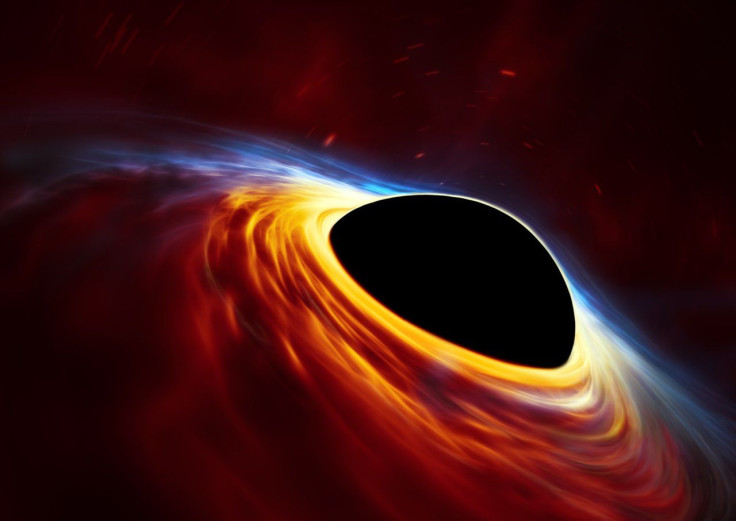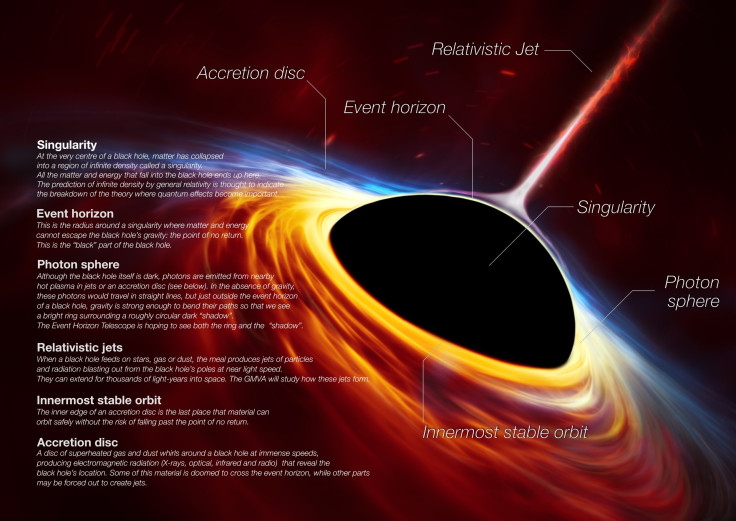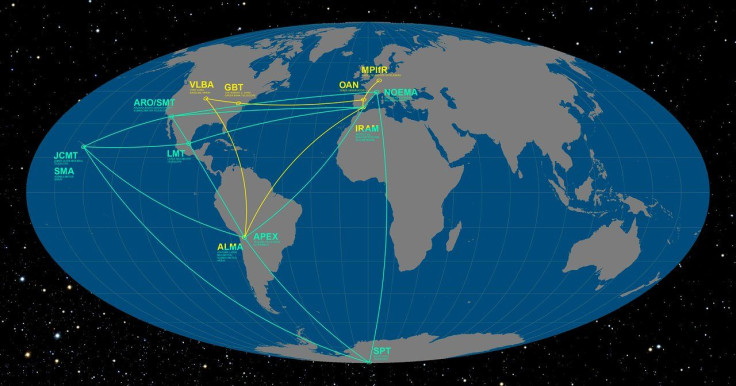What Does A Black Hole Look Like? Astronomers May Have Just Succeeded In Snapping A Photo

Astronomers believe that they have succeeded in taking the first-ever image of a black hole — or, more precisely, of its event horizon. On Wednesday, scientists associated with the Event Horizon Telescope (EHT) — a collaboration that uses network of telescopes spread across the globe to create an Earth-sized telescope — said that after five nights of observations, they may have snapped a photograph of the supermassive black hole residing in our galaxy’s heart.
The staggering amount of data collected during the observations has been recorded on over 1,000 hard drives, and the first images of the black hole Sagittarius A* — a behemoth 4 million times the mass of our sun — will emerge either late this year or early next year.
“Even if the first images are still crappy and washed out, we can already test for the first time some basic predictions of Einstein's theory of gravity in the extreme environment of a black hole,” Heino Falcke, a radio astronomer from the University in Nijmegen in the Netherlands who was involved in the project, told National Geographic magazine.
Black holes are perhaps the most mysterious class of objects in the known universe. Part of the enigma stems from the fact that despite overwhelming circumstantial evidence for their existence, no one has actually ever seen a black hole.
This is because their gravitational influence is so great that not even light can escape them.

“They’re reality-bending concentrations of matter squeezed into a very tiny space, creating an object with an immense gravitational pull,” the European Southern Observatory, whose Atacama Large Millimeter/submillimeter Array (ALMA) joined the EHT collaboration last month, explained in a blog post. “Around a black hole is a boundary called an event horizon — the surface beyond which nothing can escape the black hole’s clutches, not even light.”
If the EHT project, which uses telescopes in Hawaii, Arizona, Chile, and even the South Pole, succeeds in photographing the black hole’s event horizon, it could provide a concrete test for Einstein’s general theory of relativity. Models based on this theory predict a roughly circular shadow around the black hole.

“Now, it could be that we will see something different,” Sheperd Doeleman, director of the EHT project, told BBC News in February. “As I've said before, it's never a good idea to bet against Einstein, but if we did see something that was very different from what we expect we would have to reassess the theory of gravity.”
© Copyright IBTimes 2024. All rights reserved.





















